In 1724, a 12-year old boy was found near the German town of Hamelin. He didn’t speak a word, and his mannerisms were strange. Who was he? The children called him ‚Peter‘ or ‚Peter the Wild Boy’. No one understood this young boy, but they were intrigued. Was he human? A feral child raised by bears?
About a year later, he was introduced to king George I of England and his court, who were fascinated. A doctor-mathematician took special interest in him, believing to have found a living specimen of the „Homo ferus“, the Feral Human. All attempts of teaching him the human language fell short, but Peter showed an interest in music.
He spent the rest of his life in the English countryside, with a leather collar around his neck, indicating his identity and affiliation.
I wanted to offer a different kind of ending to this story about fascination through misunderstanding, one where Peter leaves this collar behind and returns to where he seemed happiest: To his bear.
I wanted to offer a different kind of ending to this story about fascination through misunderstanding, one where Peter leaves this collar behind and returns to where he seemed happiest: To his bear.
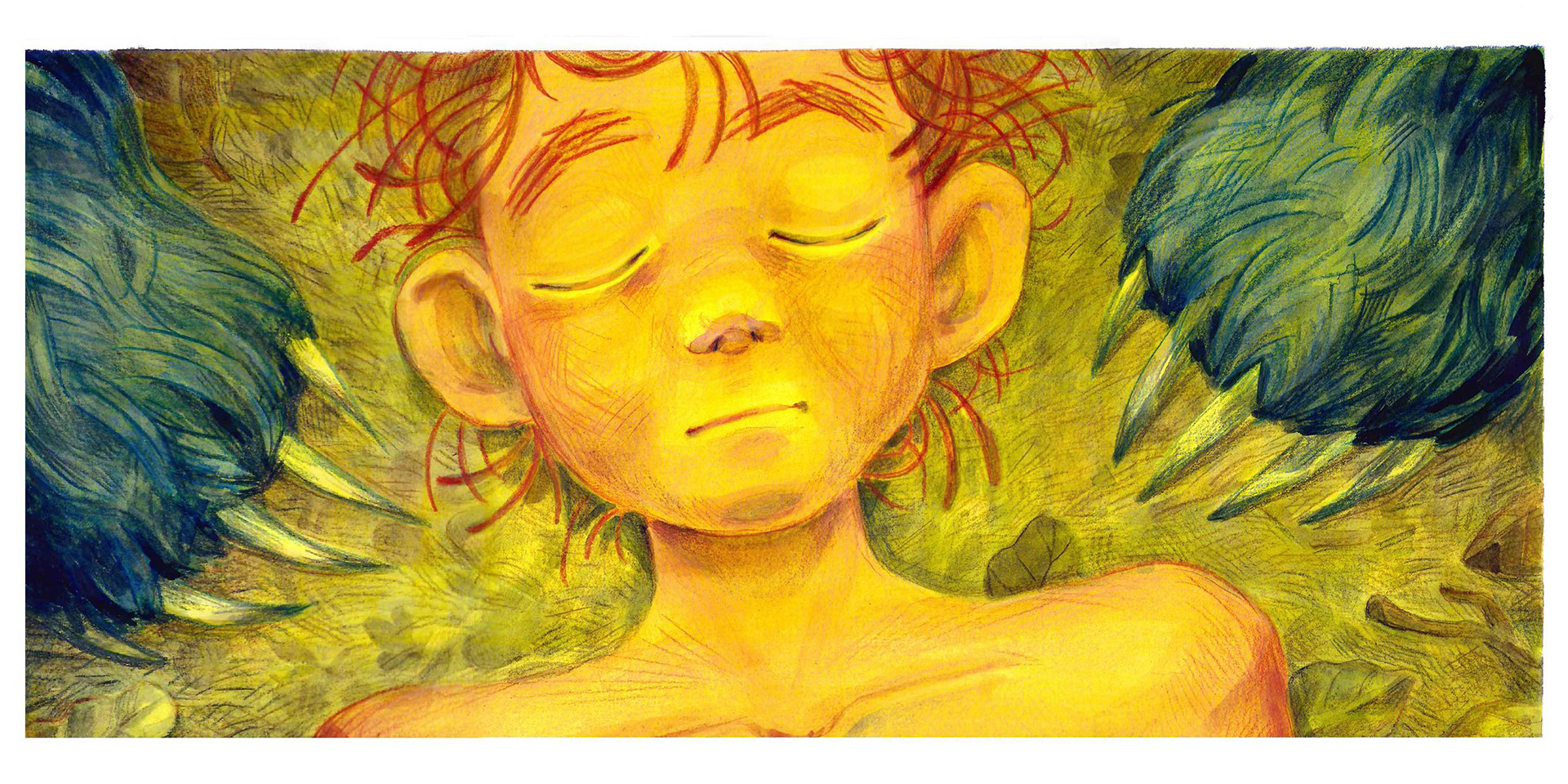
1: Peter at home
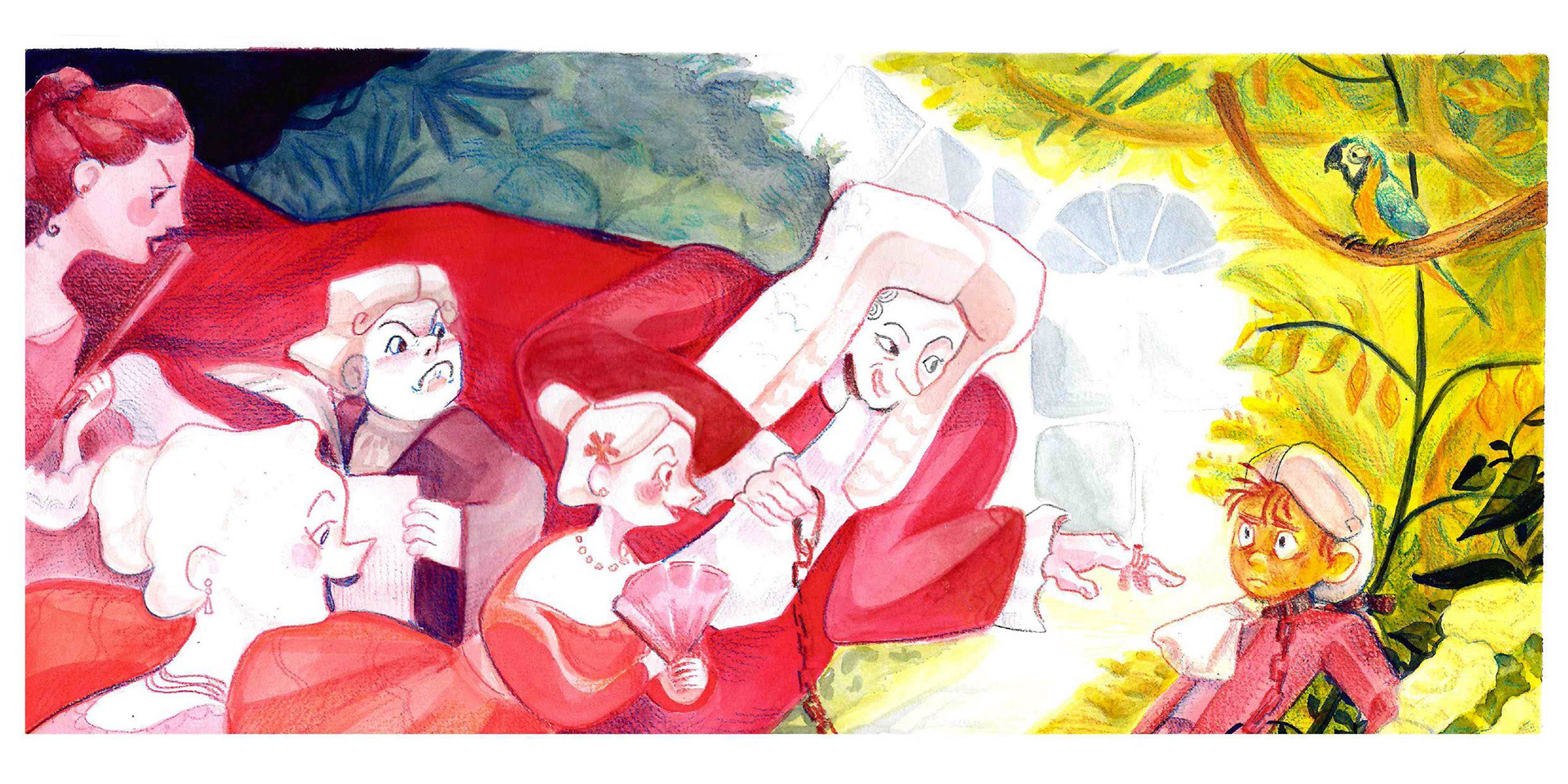
2: George I. meeting Peter

3: Peter returning home

Cover
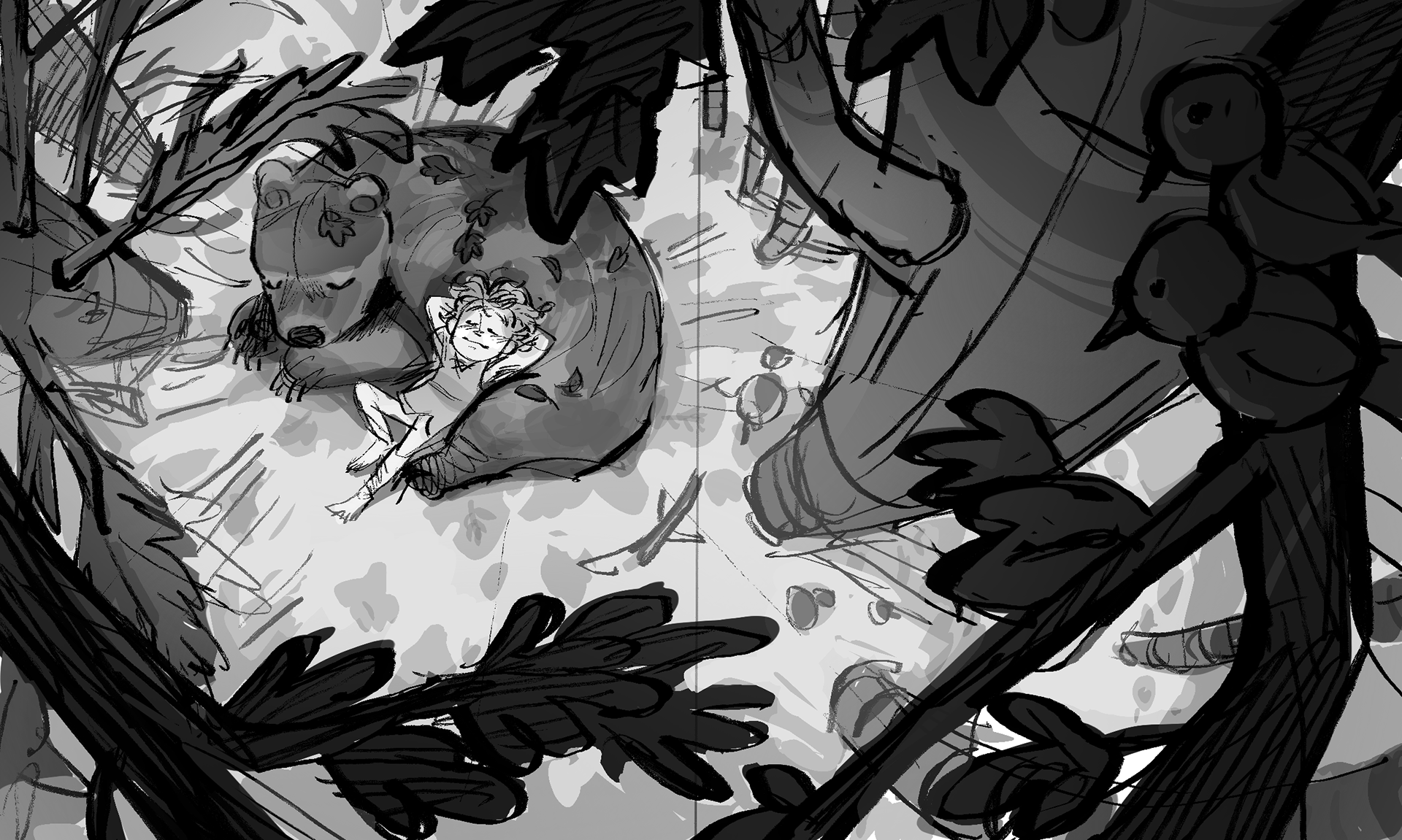
First page spread
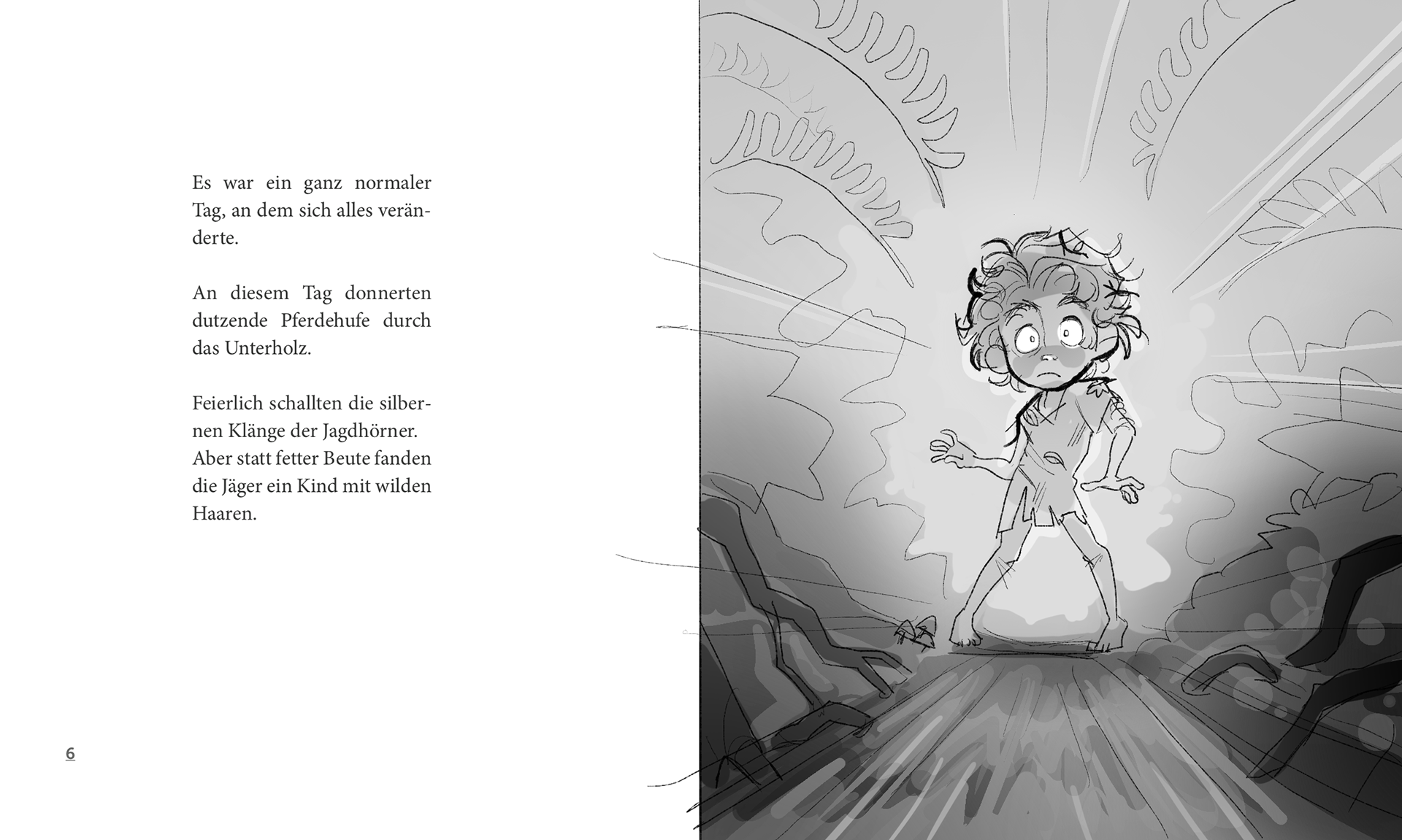
A wild boy is found
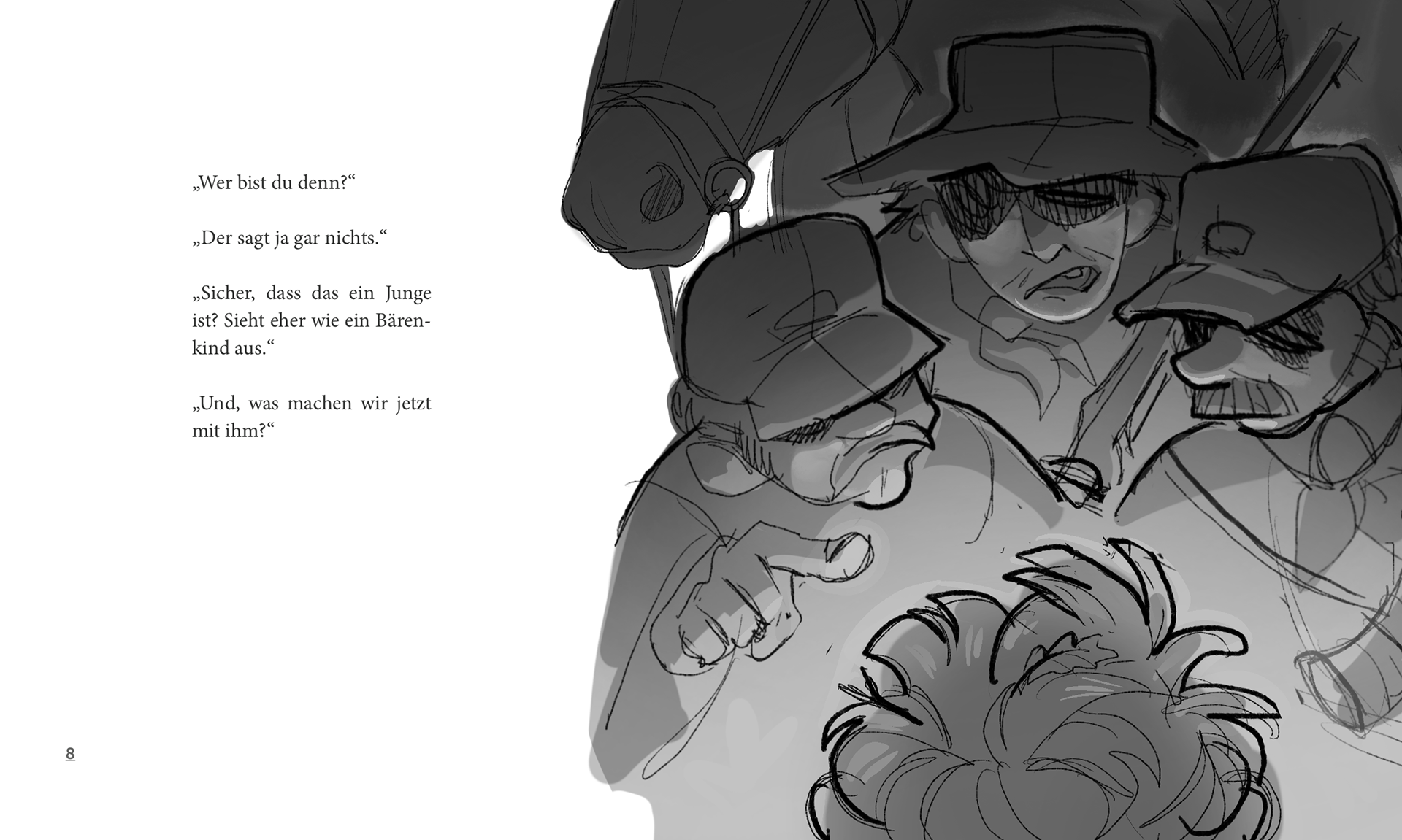
"What should we do with him?"
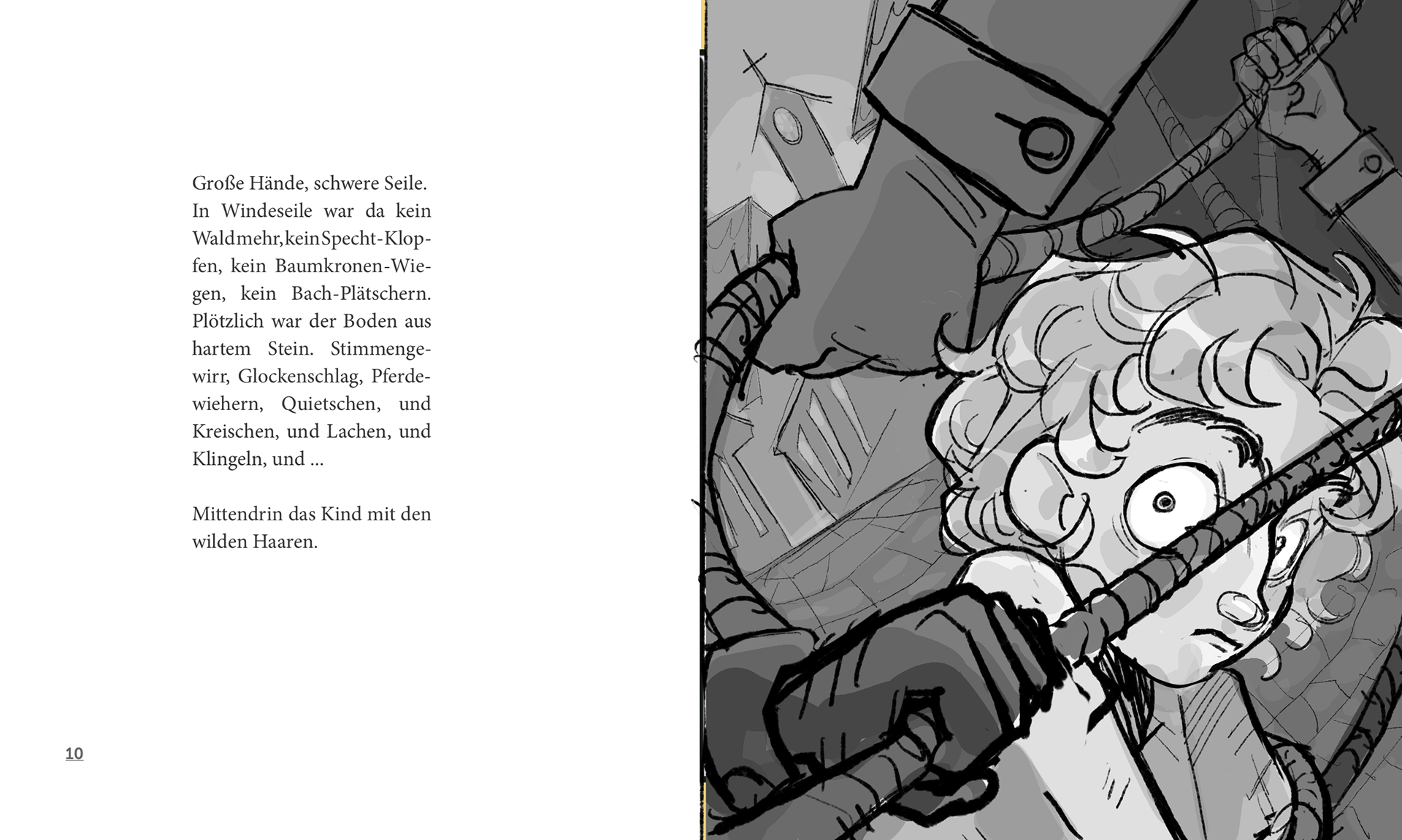
Brought to town
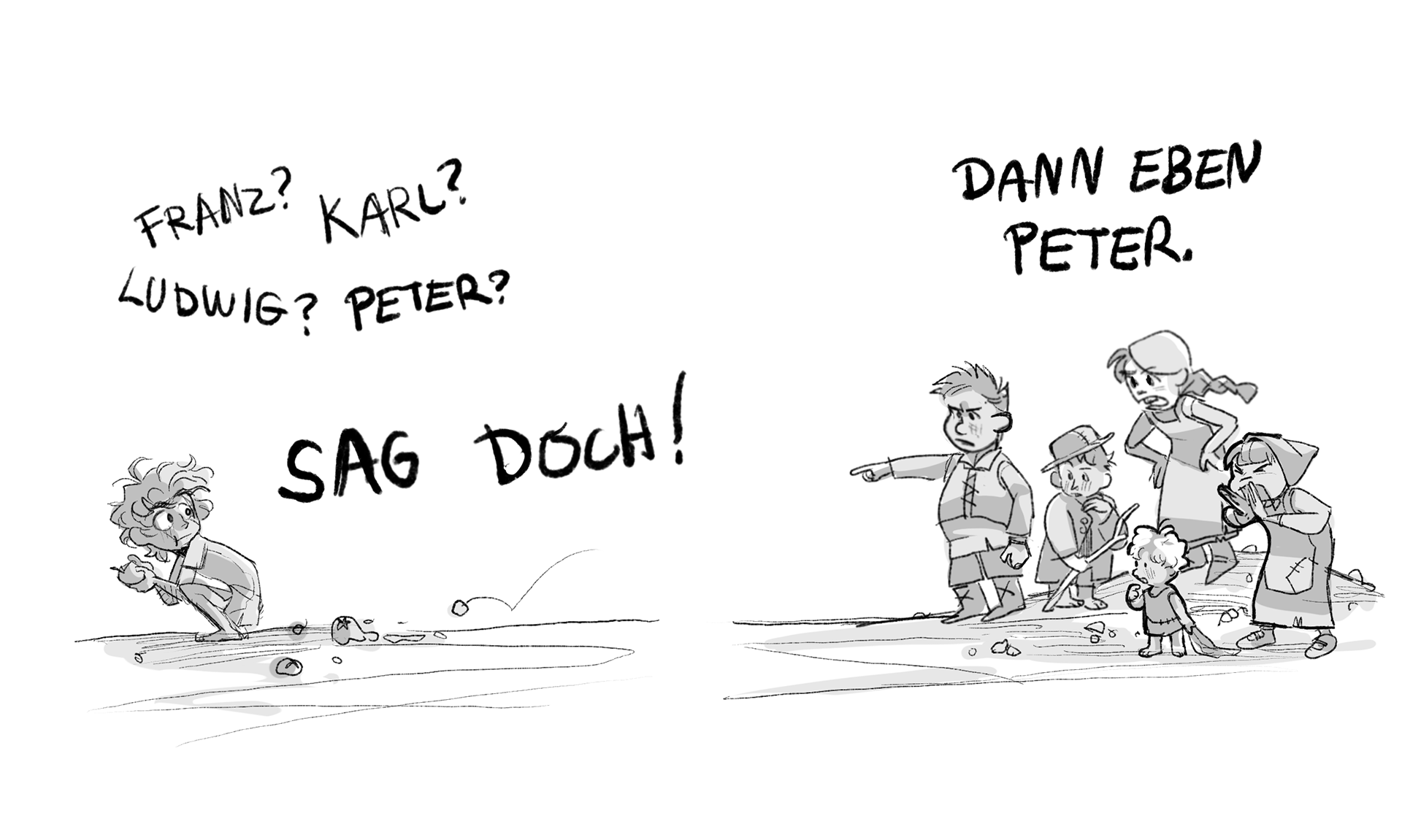
The town's children choose a name for the wild boy
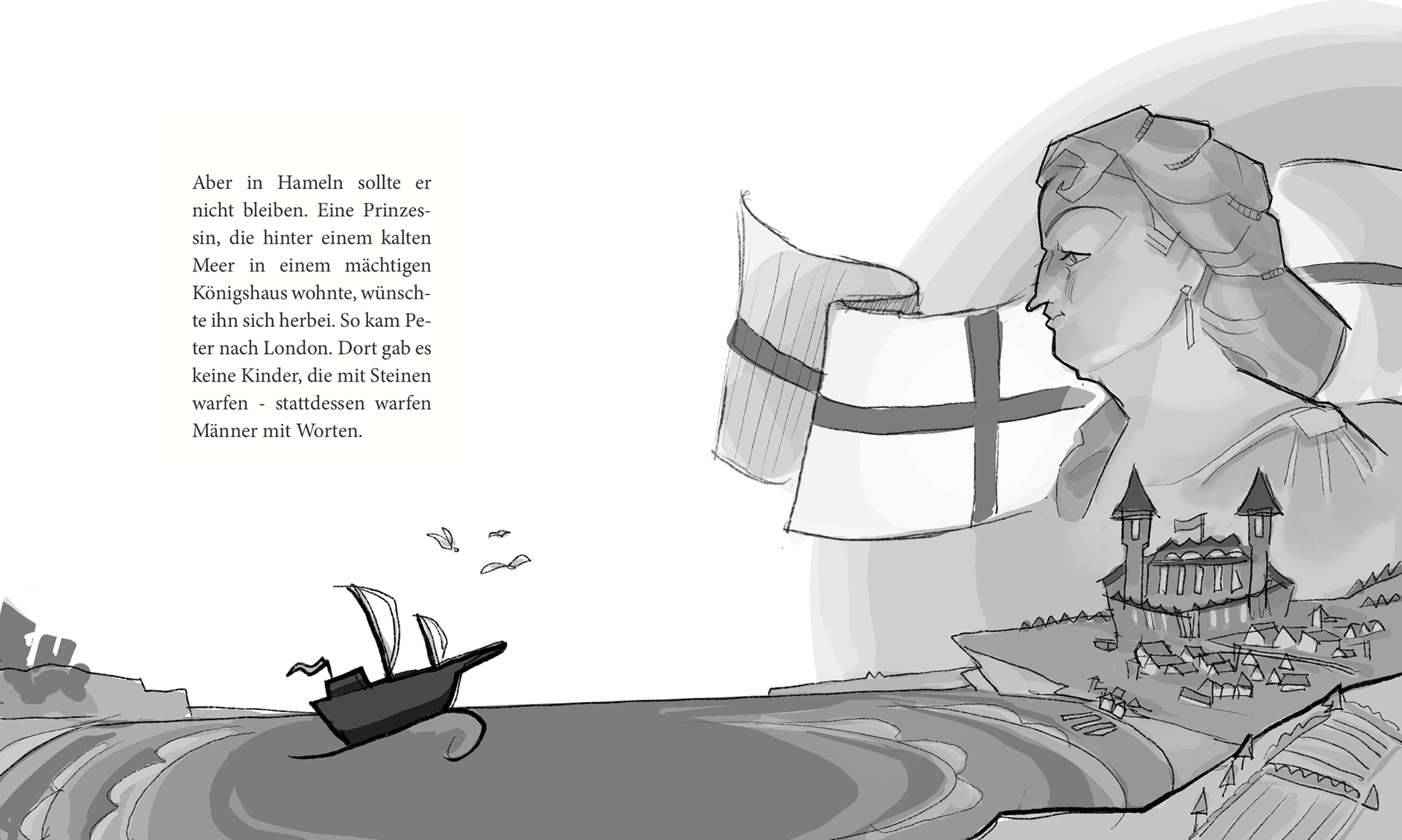
Peter is brought to Britain
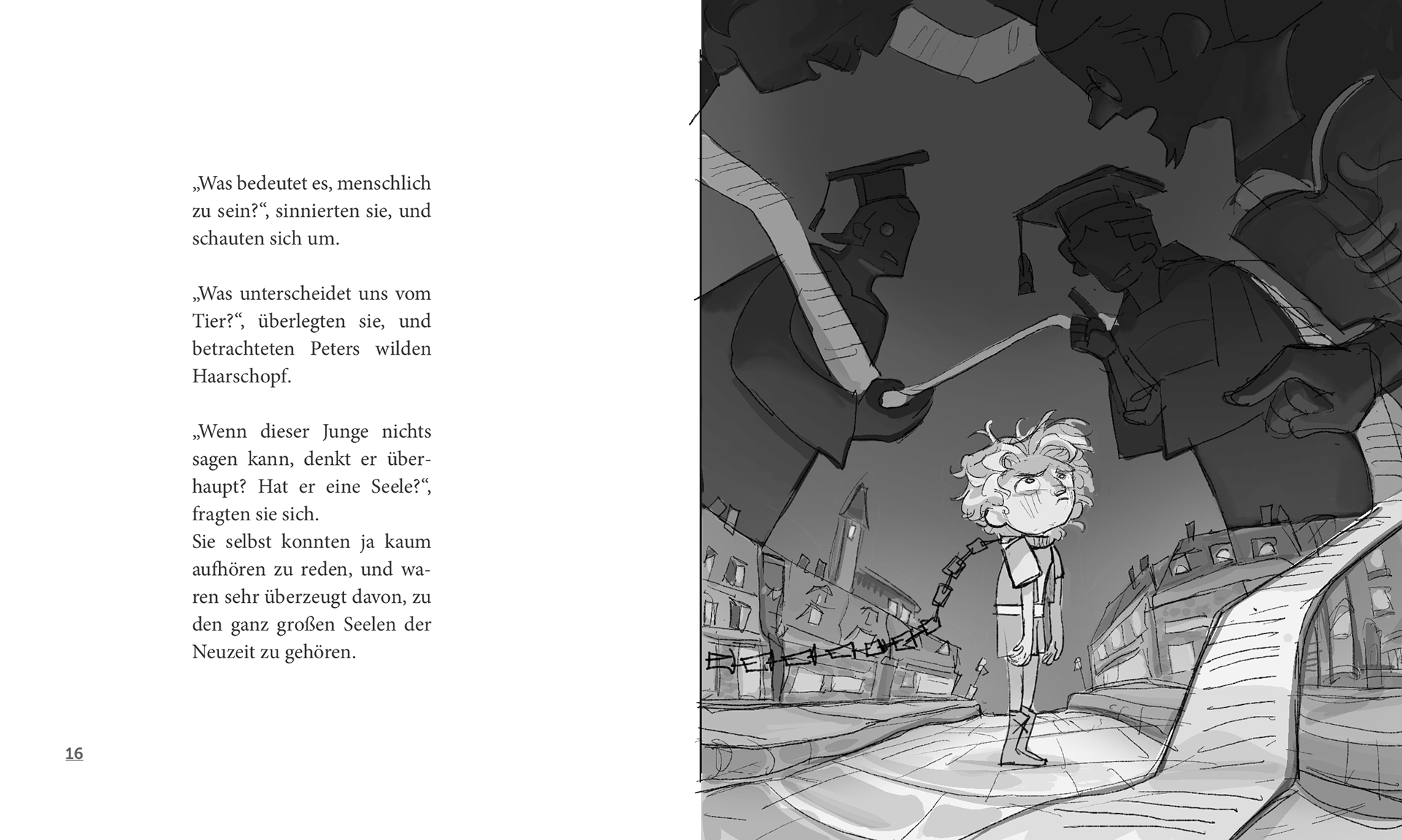
Philosophers debate over his head
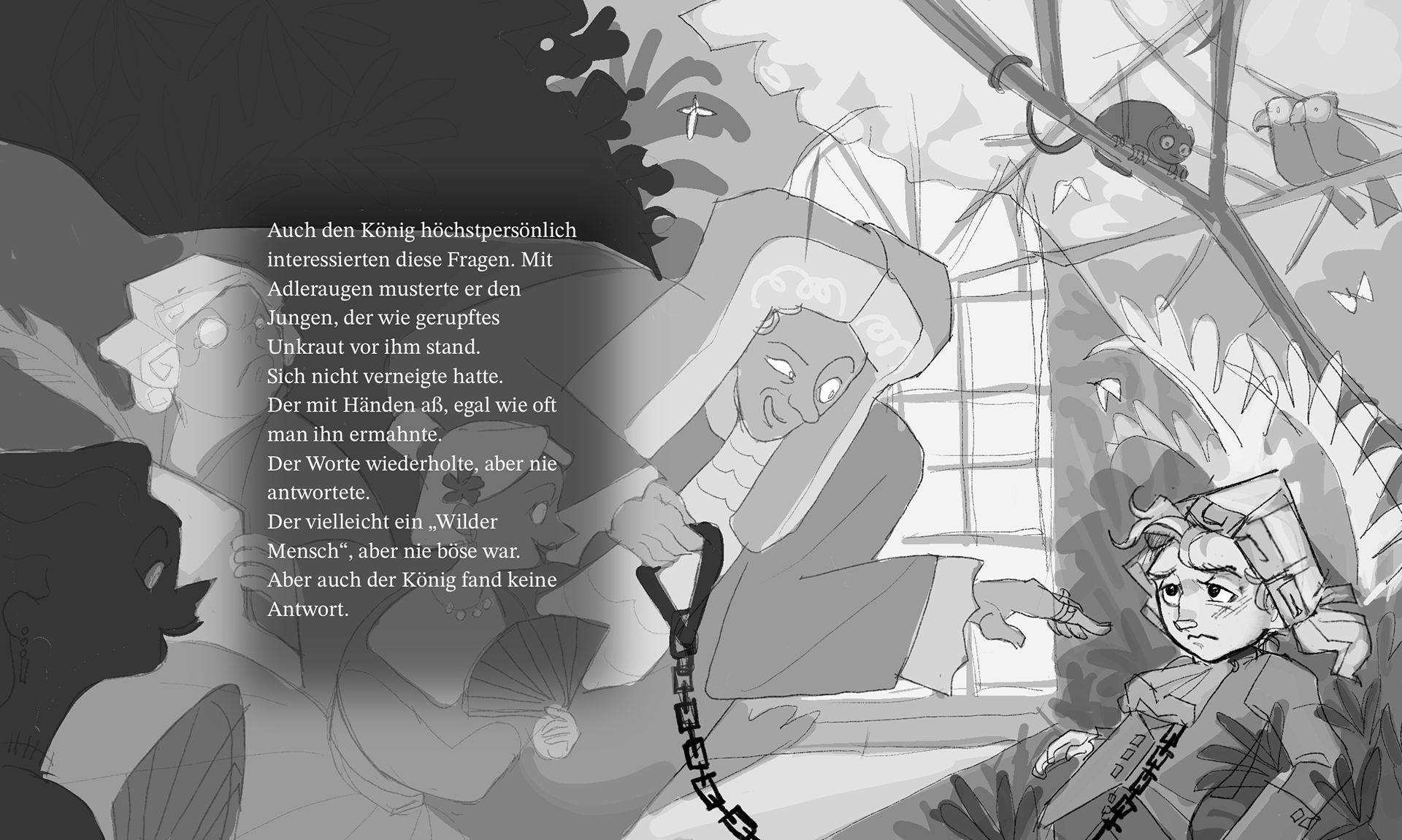
Audience with the king
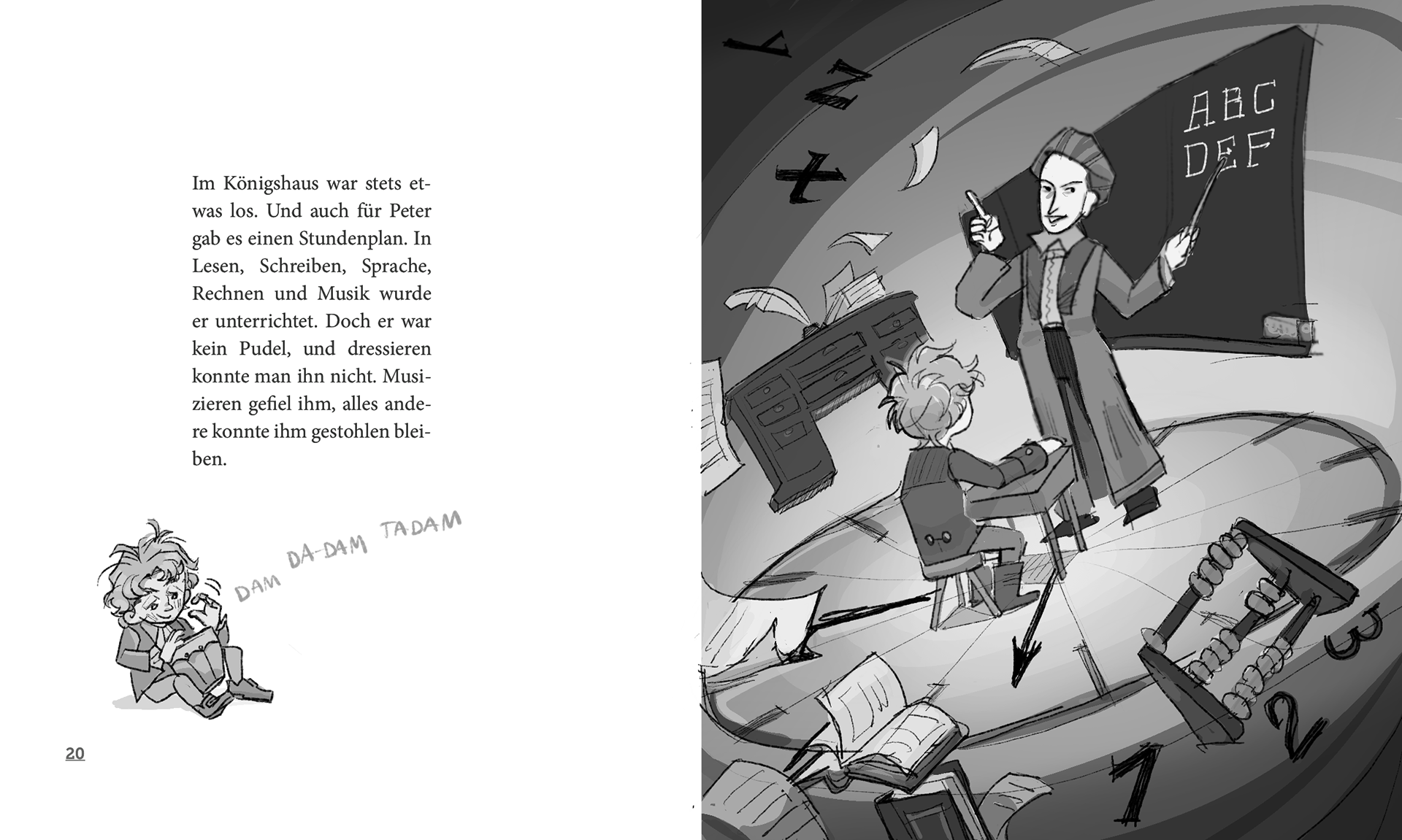
School lessons
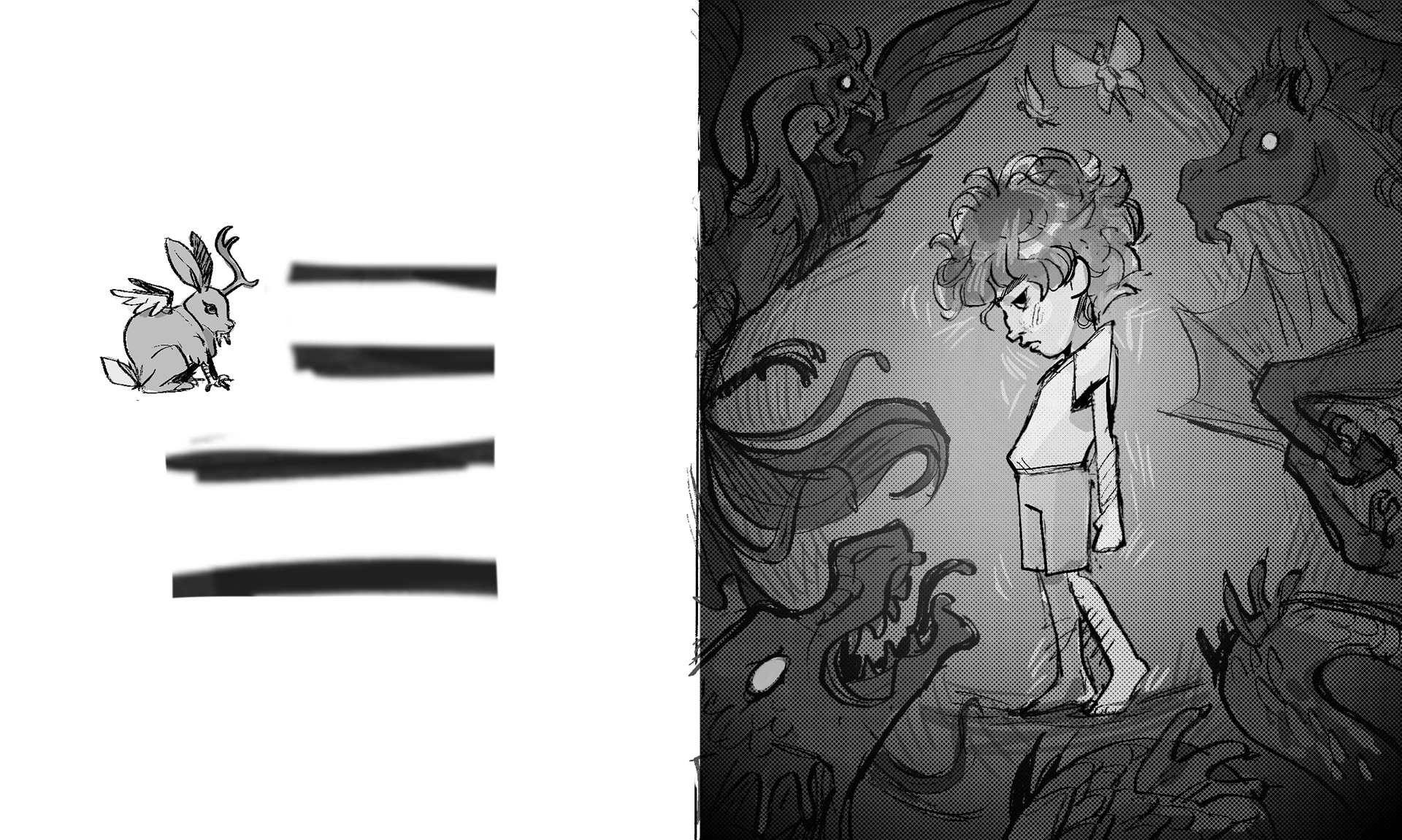
Nothing but a cryptid?
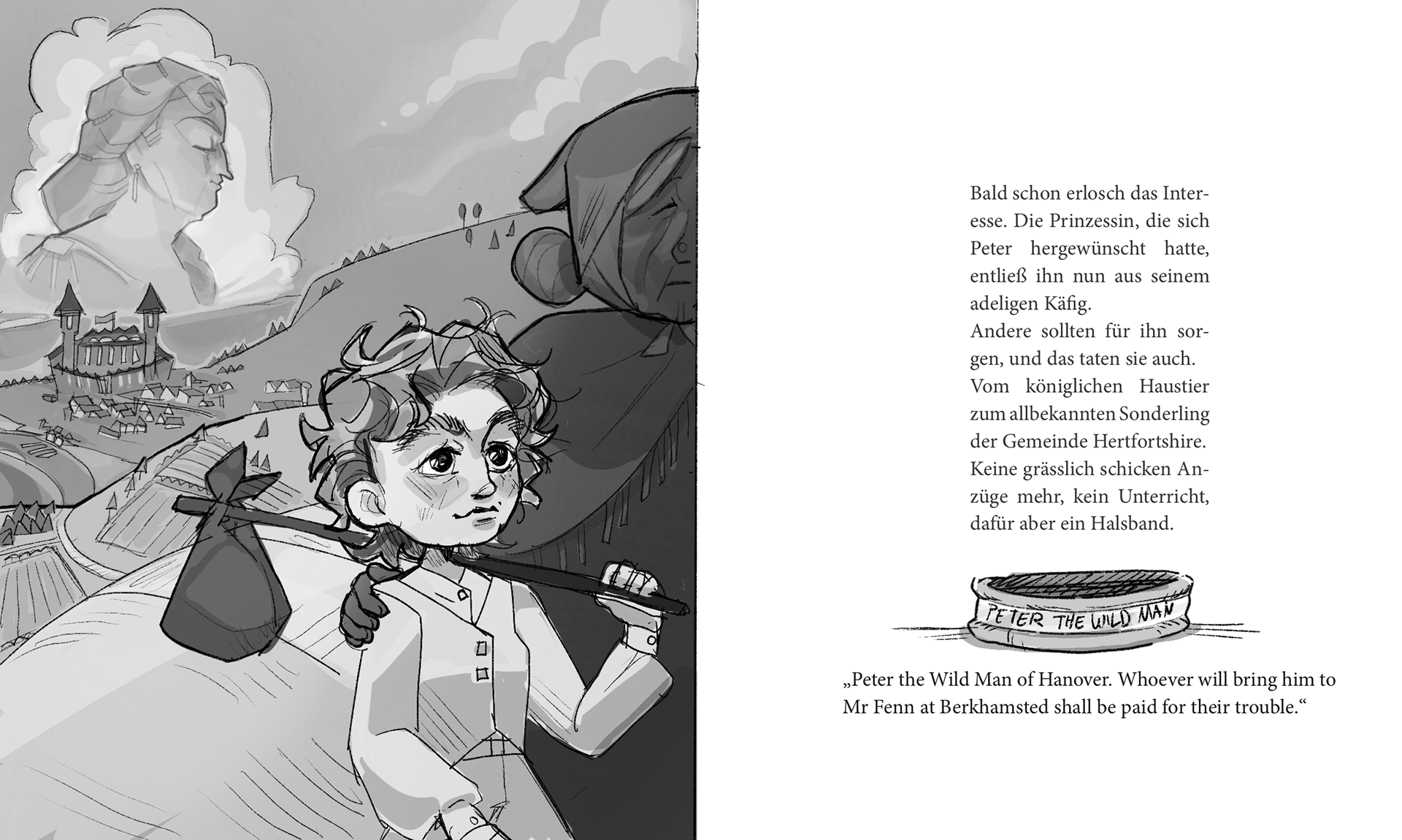
Departure
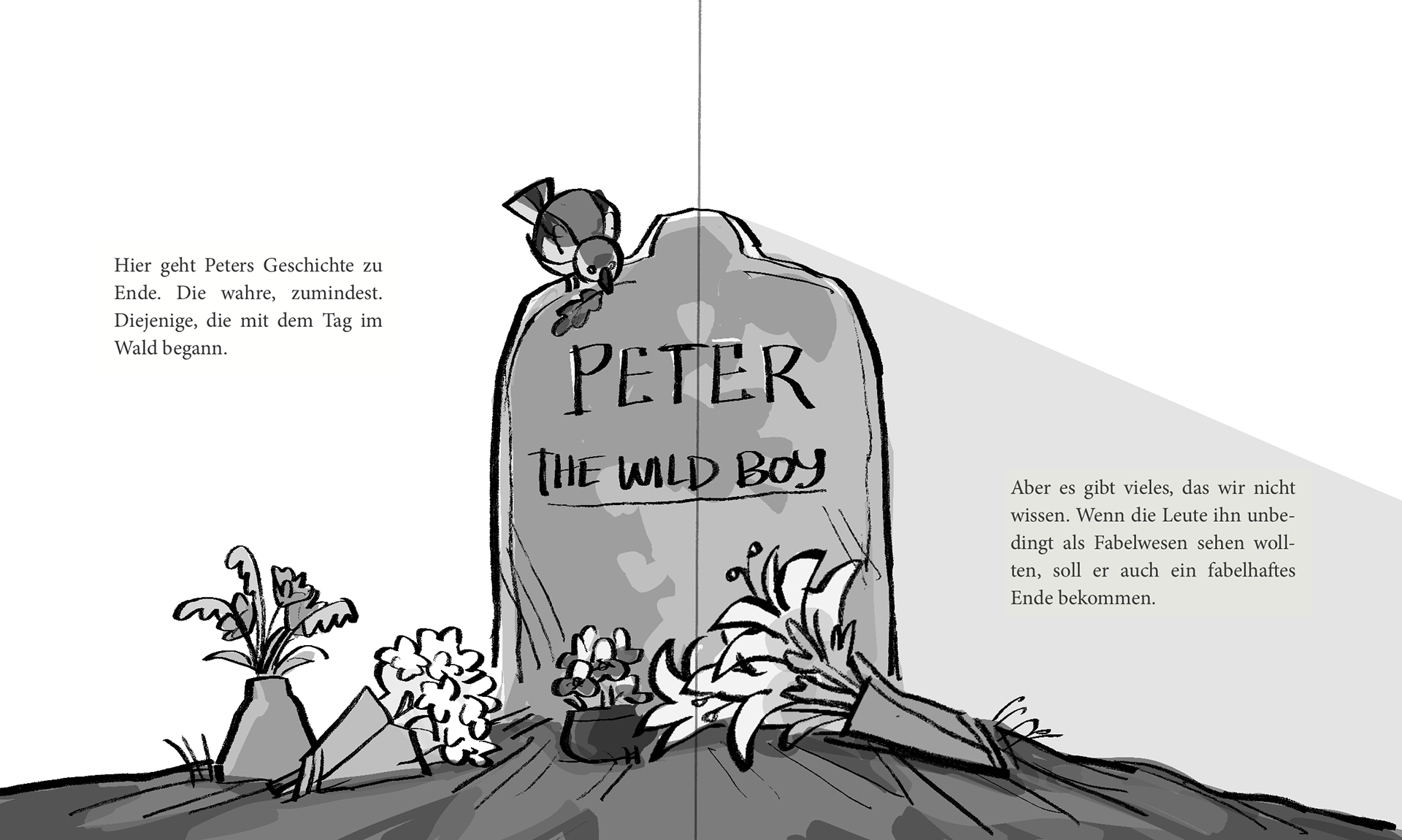
The end of the "real" story
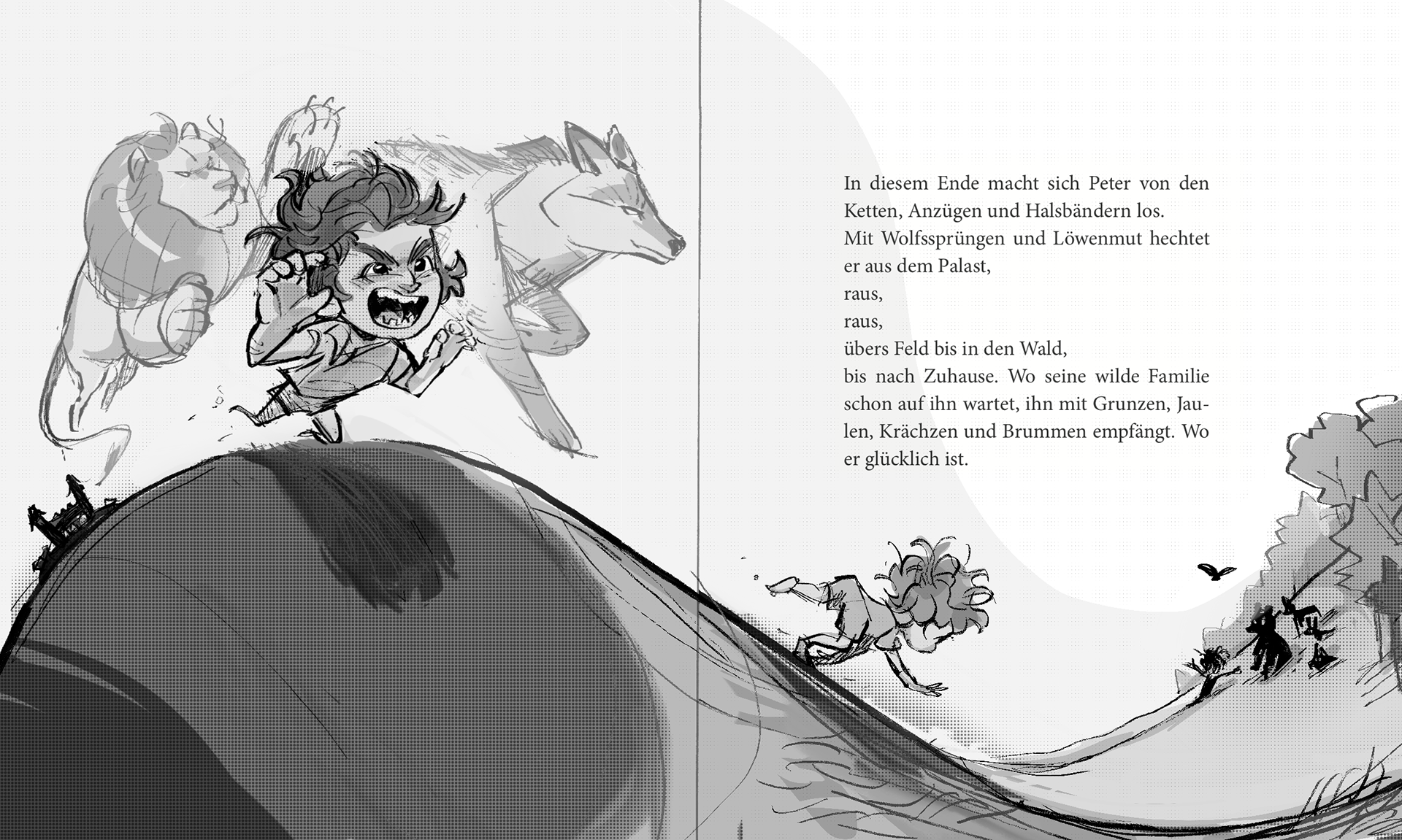
the alternative ending
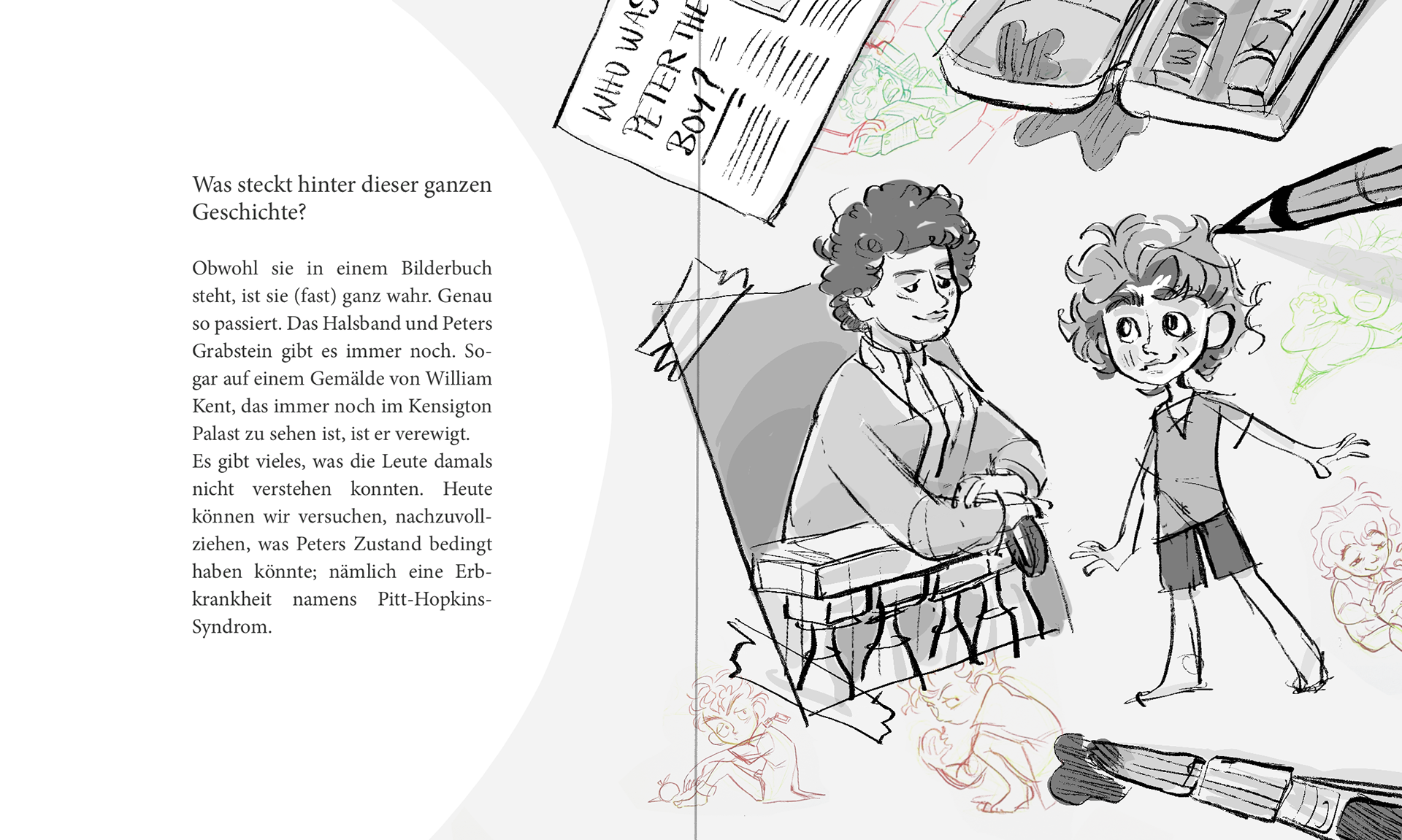
Fact check 1
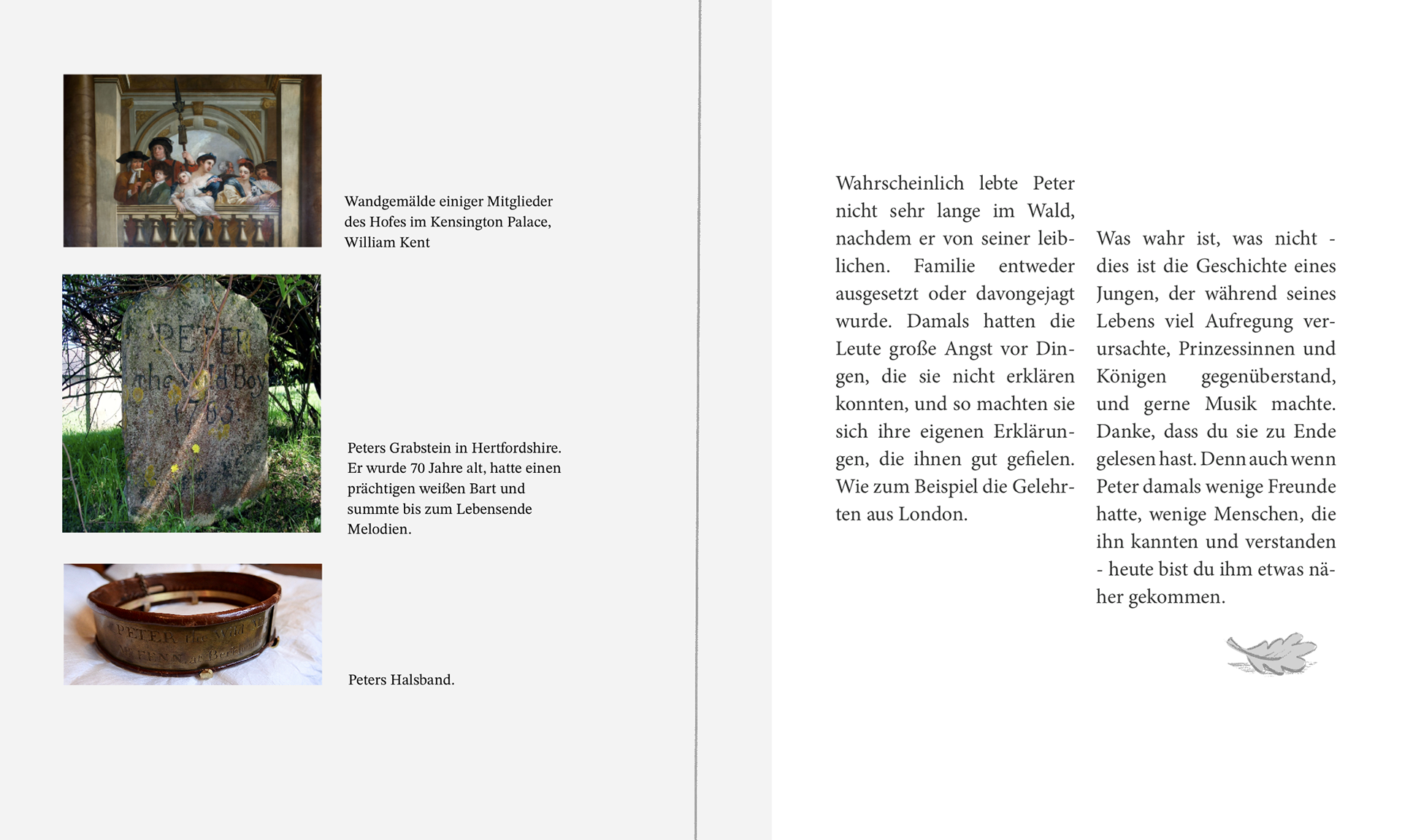
Fact check 2
page spread, color script
